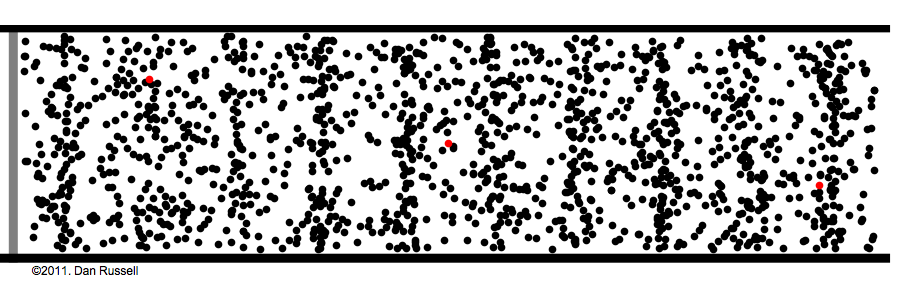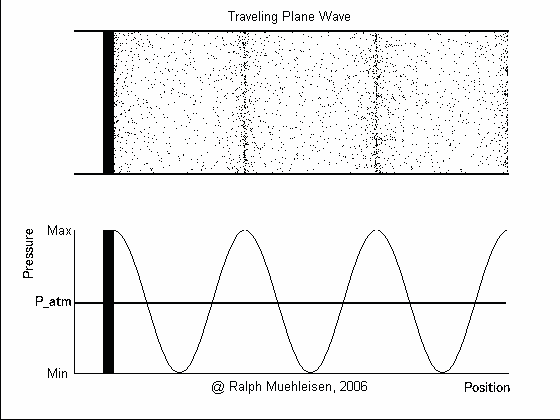
In the novel The Phantom Tollbooth, the protagonist Milo journeys through a strange kingdom where the laws of nature, as we know them, do not quite hold. At one point he stumbles into the Valley of Sound, which has been completely enshrouded in silence since its Soundkeeper locked all sounds away in her fortress. Milo visits her in the fortress, the only place in the Valley where sounds can still be produced, and she shows him a filing cabinet containing all the sounds ever made, neatly categorised. As he tries to plead the case of the villagers, Milo and the Soundkeeper get into an argument. At one point he suppresses a retort, feeling the “But!” that he has just stopped himself from pronouncing caught in his mouth. Hurriedly leaving the fortress without saying another word, he tips the “But!” into a canon, which fires and destroys the fortress. All the sounds are released and flood back to the valley, much to the delight of the people.
As a child reading this scene, I imagined the word “But” bouncing around in Milo’s mouth, the sharp corners of the “B” and “t” poking the fleshy insides uncomfortably. In our world, of course, sounds do not come in neat little packages that exist indefinitely. A sound is fleeting; we hear it, and then it’s gone forever.
But what then is a sound? Nothing more than the back-and-forth motion of air molecules! Take a look at this animation of air molecules in a pipe:

Those black dots are air molecules, made to move by the vibrating piston on the left. We see that there are regions where the molecules are clustered closer together – regions of higher-than-normal pressure, which are travelling towards the right. These regions are called compressions. In between the compressions are what we call rarefactions – regions where the particles are far away from one another, and where the pressure is lower than atmospheric pressure.
Notice that the individual molecules (a couple of which are highlighted in red) are vibrating back and forth, but do not actually travel anywhere. Meanwhile, however, the compressions and rarefactions travel towards the right. We call this travelling pattern of compressions and rarefactions the pressure wave or sound wave. If you look at the plot of pressure against position in the lower half of the following animation, you can clearly see the pressure wave moving rightwards:

When this sound wave reaches an ear, it causes the eardrum to vibrate back-and-forth in much the same way as the piston is doing. These vibrations are sent as signals to the brain, which perceives them as sound. The exact pattern of compressions and rarefactions, for instance how closely successive compressions are spaced, determines what kind of sound we hear. (See this post on What Makes a Musical Sound?)
Click to Expand: More About Sound WavesSound waves travel in air at about 343 metres per second. They can travel through liquids and solids as well, at higher speeds than in air; though the sound waves that our ears are designed to hear are airborne ones.
The difference in pressure between a compression and rarefaction is tiny compared to the absolute pressure of air. The amplitude (difference between crest pressure and atmospheric pressure) of a just-audible sound is ![]() Pascals, and that of a very loud sound is about 10 Pascals. Compare that to atmospheric pressure, which is
Pascals, and that of a very loud sound is about 10 Pascals. Compare that to atmospheric pressure, which is ![]() Pascals!
Pascals!
There are a couple of points we can take away from this description of sound. Firstly, you can’t have sound waves if there isn’t a medium of particles for them to travel through – which is why there isn’t sound in the vacuum of outer space. (Conversely, the residents of the Valley of Sound should still have been able to make sounds despite the Soundkeeper’s best efforts, since they presumably had air to breathe.) The second point is that sounds cannot, of course, be stored in a mouth or a filing cabinet, since they are just the transient motion of air particles. In order to keep a copy of a sound, we would need to use a recording device, which has to reproduce the sound during playback. But it’s not the same sound as the original, and often does not sound quite as lifelike!
Leave a Reply
Be the First to Comment!